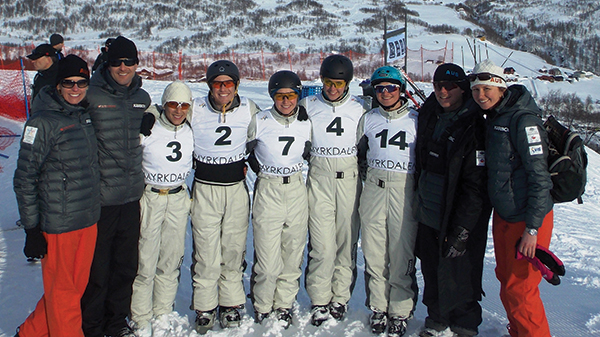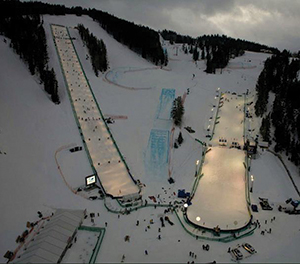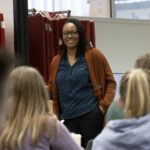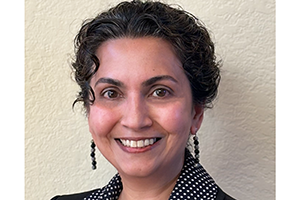
Barbara Meyer travels to the Olympic Winter Games (OWG) in Sochi, Russia, this month as a sport psychology consultant for members of the Australian Freestyle Ski Team as well as members of the U.S. men’s hockey team. Held Feb. 7-23, this will be the fourth OWG for Meyer, a professor in the Department of Kinesiology, College of Health Sciences.
She’ll bring memories of the 2010 Olympics in Vancouver, where she witnessed Australian Lydia Lassila win a gold medal in women’s aerial skiing and goalie Ryan Miller backstop Team USA to a silver medal in men’s hockey. Both Lassila and Miller will be competing in Sochi this month.
As part of her practice, Meyer utilizes an interdisciplinary, athlete-centered approach. She works with other support staff – coaches, physiotherapists and nutritionists – to develop individual performance plans for each athlete.
Excellence is not a “one-size-fits-all construct,” says Meyer. “I formulate an individual mental game plan for each athlete, along with members of the support team, and deliver that plan,
sometimes using Skype, FaceTime and other
technology.”

aerials, moguls, snowboard half-pipe and slopestyle.
This interdisciplinary approach is consistent with a model of athlete performance developed in the Laboratory for Sport Psychology and Performance Excellence at UWM.
It also characterizes community engagement initiatives of the Integrated Health Care and Performance unit of the Department of Kinesiology. Examples are collaborations with the Milwaukee Fire Department and support of the Paws vs. Claws marathon challenge by the Performance Injury Clinic.
Preparing for anything – and everything
At the core of Meyer’s work with Olympians is being prepared for every situation that she and the athlete can imagine. Using simulations and mental imagery, they work together to develop routines and processes that increase confidence and optimize intensity, thereby maximizing the probability of performing well on demand.
“Research tells us that one of the variables that separate elite athletes from the rest is mental preparation,” Meyer points out. She asks athletes to reflect on their best and worst performances. “What was I thinking, feeling, doing?”
“Maybe when they performed their best they felt well-rested, or perhaps they were doing a lot of yoga. Those are controllable things that athletes can try to replicate in the future.”
An example of something an athlete can’t control is the weather. Particularly in a high-risk sport such as aerial skiing, eliminating extraneous variables is all-important. “It becomes essential to be calm, confident and focused,” says Meyer.
She describes how the high visibility of the Olympics presents unique challenges for athletes in certain events. “For many sports, such as aerial skiing, skeleton or bobsled, most of the world only pays attention every four years – while the athletes train and compete every year.”
Nothing new
It’s especially important to prepare young athletes who have never competed in the Olympics and don’t realize what the experience will be like. “Anything new that we are going to introduce, we try to have in place at least one year out from the Games,” she says. “Sometimes, out of desperation or fear or naiveté, athletes will want to bring in something like new skis or a new nutrition program.” The key is having every member of the athlete’s support team working together to counteract that temptation.
She also describes how “people can come out of the woodwork” to try to attach themselves to an Olympic athlete. And the guideline for having friends and family attend your event is the same as the rest of the athlete’s preparation. “If your family and friends always are on the sidelines cheering for you, then include them. If not, don’t change that for the Olympic Games.”
Social media now is part of the preparation for elite competition. Meyer said that for Sochi, some countries have policies expressly forbidding athletes to be on social media in training and competition venues. “This was a response to the 2012 Olympic Summer Games in London, where some athletes were tweeting between dives and running or swimming heats.”
Meyer tells athletes that if rules and regulations permit them to tweet from non-training and non-competition venues such as the Olympic Village, it’s all right to do so IF it’s already part of their routine. “If Facebook is part of what you do throughout the World Cup or National Hockey League season, then it’s OK at the Olympics.
“After all, the goal is for the athletes to treat this as just another competition. Whether you are playing hockey in Buffalo or Sochi, it’s still just ice and a puck.”







